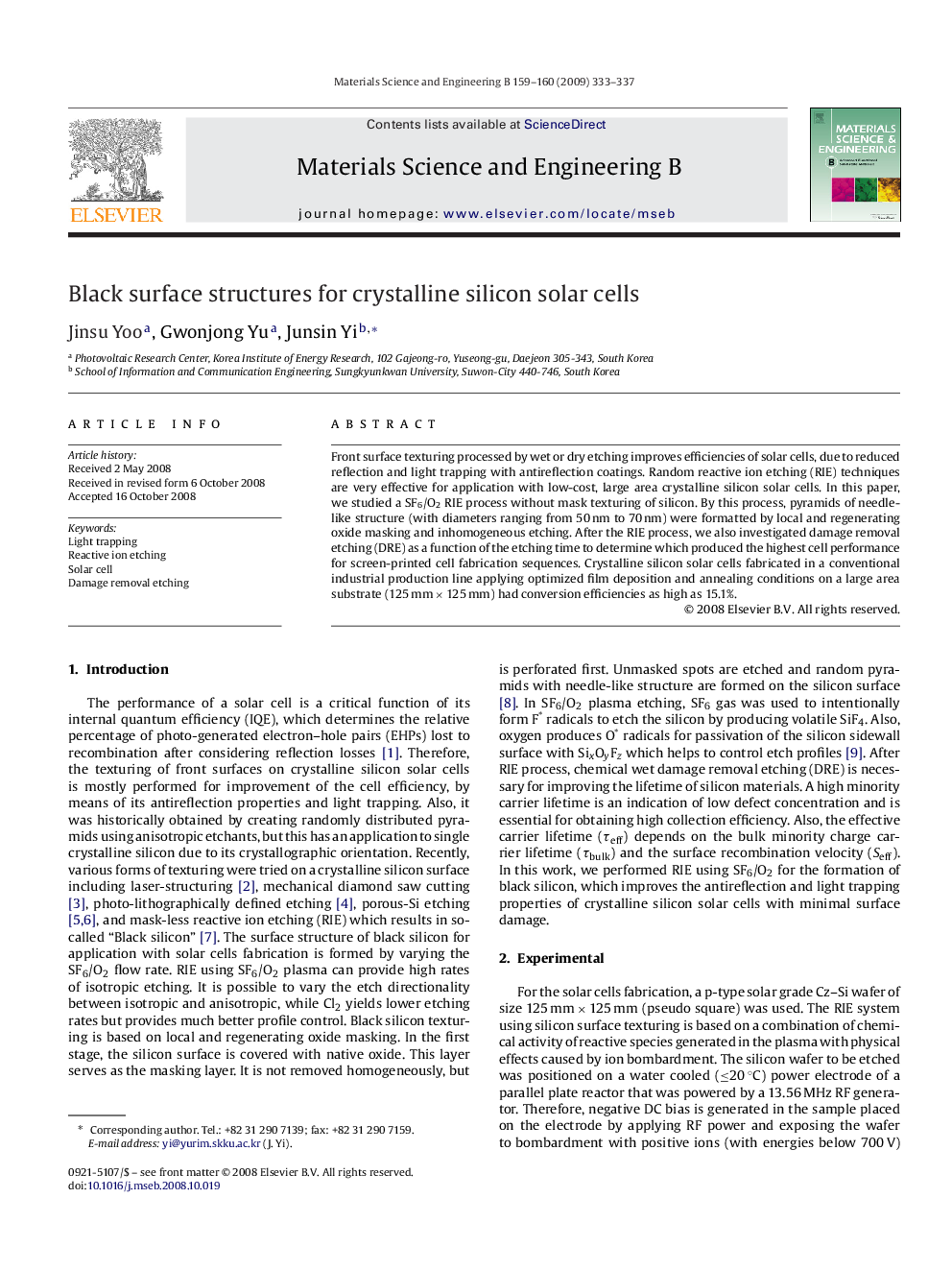| Article ID | Journal | Published Year | Pages | File Type |
|---|---|---|---|---|
| 1530693 | Materials Science and Engineering: B | 2009 | 5 Pages |
Front surface texturing processed by wet or dry etching improves efficiencies of solar cells, due to reduced reflection and light trapping with antireflection coatings. Random reactive ion etching (RIE) techniques are very effective for application with low-cost, large area crystalline silicon solar cells. In this paper, we studied a SF6/O2 RIE process without mask texturing of silicon. By this process, pyramids of needle-like structure (with diameters ranging from 50 nm to 70 nm) were formatted by local and regenerating oxide masking and inhomogeneous etching. After the RIE process, we also investigated damage removal etching (DRE) as a function of the etching time to determine which produced the highest cell performance for screen-printed cell fabrication sequences. Crystalline silicon solar cells fabricated in a conventional industrial production line applying optimized film deposition and annealing conditions on a large area substrate (125 mm × 125 mm) had conversion efficiencies as high as 15.1%.
